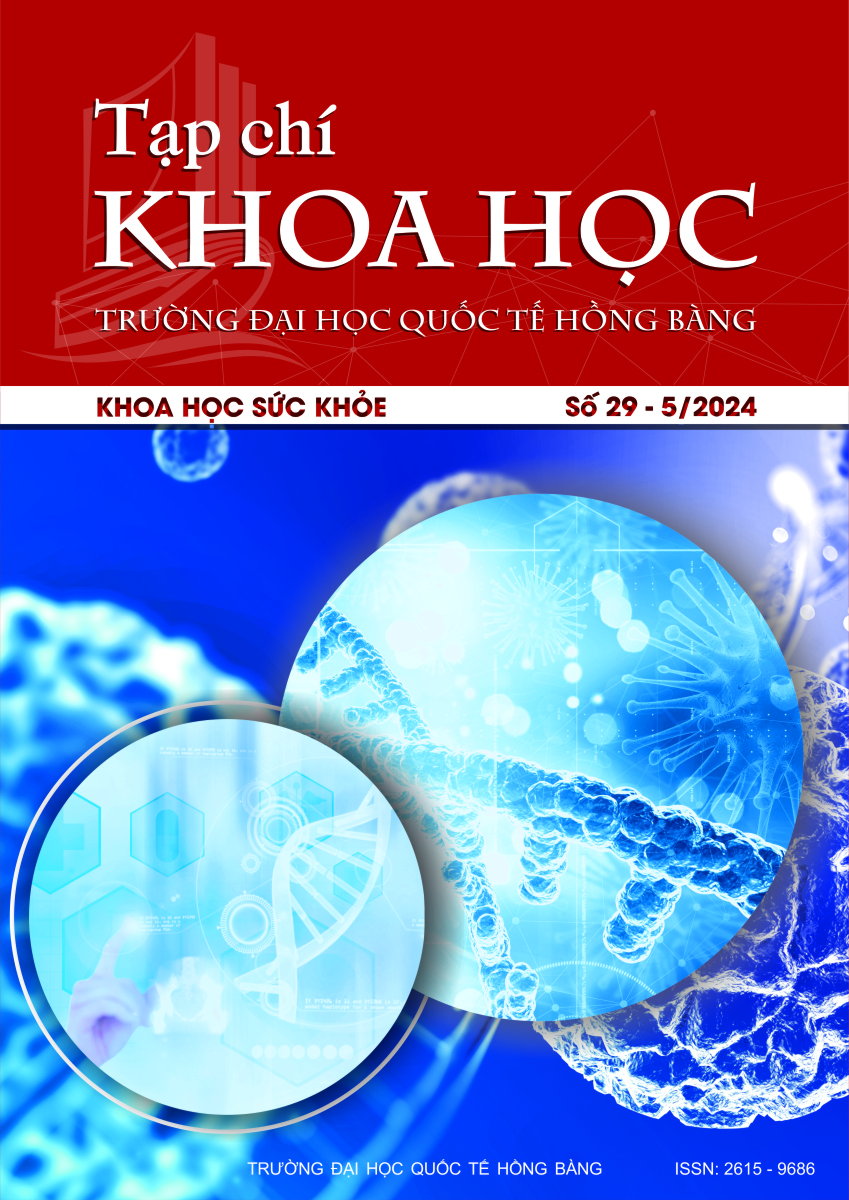Sứ nha khoa: Sự phát triển và thách thức
Các tác giả
DOI: https://doi.org/10.59294/HIUJS.29.2024.606Từ khóa:
sứ nha khoa, phục hồi toàn sứ, nha khoa phục hồi, sứ zirconiaTóm tắt
Đặt vấn đề: Phục hồi toàn sứ trong nha khoa đã trãi qua quá trình phát triển đáng kể, với những cải tiến về các đặc tính cơ học, quang học và tương hợp sinh học ngày càng tối ưu. Ngày nay, nhu cầu về tính thẩm mỹ và sự tương hợp sinh học của vật liệu ngày càng cao, từ đó vật liệu sứ đã trở nên phổ biến và là lựa chọn ưa thích trong nha khoa phục hồi. Sự phát triển của sứ zirconia đã cho ra đời nhiều loại vật liệu với thành phần và chỉ định lâm sàng đa dạng, tuy nhiên việc cân đối giữa độ trong mờ và độ bền cơ học, cũng như việc đạt được độ bền và độ ổn định tối ưu cho các cầu răng dài vẫn còn là thách thức. Các phương pháp tiếp cận thay thế, bao gồm các vật liệu composite đa tinh thể và zirconia có kích thước nano, cung cấp con đường triển vọng để giải quyết những lo ngại này. Phương pháp nghiên cứu: Tổng quan y văn về các loại vật liệu sứ nha khoa, bài báo này nhằm mục đích cung cấp một góc nhìn tổng quan về sự phát triển và thách thức trong phục hồi toàn sứ. Kết luận: Nghiên cứu này cập nhật cách phân loại mới của sứ nha khoa, và làm nổi bật các khía cạnh lâm sàng có liên quan, để hỗ trợ trong việc lựa chọn vật liệu cho các tình huống lâm sàng cụ thể.
Abstract
Background: All-ceramic restorations in dentistry have witnessed significant advancements owing to their desirable mechanical, optical, and biocompatible properties. With the rise in patient demand for aesthetic excellence and biologically compatible materials, all-ceramic (zirconia) restorations have gained popularity as preferred choices in restorative and prosthetic dentistry. The evolution of zirconia ceramics has led to a diverse range of materials with varying compositions and clinical indications, yet achieving optimal strength and stability for long-span fixed dental prostheses remains a challenge. Alternative approaches, including advanced polycrystalline composites and nanosized zirconia, offer promising pathways to address these concerns. Research methods: This article provides a comprehensive review of the literature on dental ceramic materials, the advancements and challenges in all-ceramic restorations. Conclusion: Consequently, updating previous classifications of dental ceramics, and highlighting clinically relevant aspects to aid in material selection for specific clinical scenarios.
Tài liệu tham khảo
[1] F. Inchingolo, A.D. Inchingolo, I.A. Charitos,…, and A.M. Inchingolo, “Ceramic biomaterials in dentistry: chemical structure and biosafety - a review and a bibliometric visual mapping on Scopus database”, European Review for Medical and Pharmacological Sciences, 1242-1258, 2024.
DOI: https://doi.org/10.19080/CTBEB.2024.22.556089[2] A. Warreth and Y. Elkareimi, “All-ceramic restorations: A review of the literature”, Saudi Dental Journal, 32, 365–372, 2020. DOI: 10.1016/j.sdentj.2020.05.004.
DOI: https://doi.org/10.1016/j.sdentj.2020.05.004[3] I. Denry and J.A. Holloway, “Ceramics for Dental Applications: A Review”, Materials, 3, 351–368, 2010. DOI: 10.3390/ma3010351.
DOI: https://doi.org/10.3390/ma3010351[4] E.D. Rekow, N.R.F.A. Silva, P.G. Coelho,…, and V.P. Thompson, “Performance of Dental Ceramics: Challenges for Improvements”, Journal of Dental Research, 90(8), 2011. DOI: 10.1177/0022034510391795.
DOI: https://doi.org/10.1177/0022034510391795[5] J.M. Powers, J.C.Wataha and Y.W. Chen, Dental Materials: Foundations and Applications, 11th Edition, Elsivier, 2017.
[6] J.R. Kelly and P. Benetti, “Ceramic materials in dentistry: historical evolution and current practic”, Australian Dental Journal, 56, 84–96, 2011. DOI: 10.1111/j.1834-7819.2010.01299.x.
DOI: https://doi.org/10.1111/j.1834-7819.2010.01299.x[7] R.A. Bapat, H.J. Yang, T.V. Chaubal,…, and P. Kesharwani, “Review on synthesis properties and multifarious therapeutic applications of nanostructured zirconia in dentistry”, RSC Advances, 12(20):12773–12793, 2022. DOI: 10.1039/D2RA00006G.
DOI: https://doi.org/10.1039/D2RA00006G[8] S. Kongkiatkamon, D. Rokaya, S. Kengtanyakich, and C. Peampring, “Current classification of zirconia in dentistry: an updated review”, PeerJ, 11:e15669, 2023. DOI: 10.7717/peerj.15669.
DOI: https://doi.org/10.7717/peerj.15669[9] S. Ban, “Classification and properties of dental zirconia as implant fixtures and superstructures”, Materials, 14(17):4879, 2021. DOI: 10.3390/ma14174879.
DOI: https://doi.org/10.3390/ma14174879[10] J.F. Güth, B. Stawarczyk, D. Edelhoff and A. Liebermann, “Zirconia and its novel compositions: What do clinicians need to know?”, Quintessence Int, 50(7):512-520, 2019. DOI: 10.3290/j.qi.a42653.
[11] S. Vardhamana, M. Borbaa, M.R. Kaizera, D. Kima and Y. Zhanga, “Wear behavior and microstructural characterization of translucent multilayer zirconia”, Dental Materials Journal, 36(11): 1407–1417, 2020. DOI: 10.1016/j.dental.2020.08.015.
DOI: https://doi.org/10.1016/j.dental.2020.08.015[12] A.C.O. Lopes, P.G. Coelho, L. Witek,…, and E.A. Bonfante, “Microstructural, mechanical, and optical characterization of an experimental aging-resistant zirconia-toughened alumina (ZTA) composite”, Dental Materials Journal, 36(12):e365-e374, 2020. DOI: 10.1016/j.dental.2020.08.010. Epub 2020 Sep 15.
DOI: https://doi.org/10.1016/j.dental.2020.08.010[13] E.B.B. Jalkh, E.T.P. Bergamo, T.M.B. Campos,…, and E.A. Bonfante, “A Narrative Review on Polycrystalline Ceramics for Dental Applications and Proposed Update of a Classification System”, Materials, 16, 7541, 2023. DOI: 10.3390/ma16247541.
DOI: https://doi.org/10.3390/ma16247541[14] S.N. Almohammed, B. Alshorman and L.A. Abu-Naba'a, “Mechanical Properties of Five Esthetic Ceramic Materials Used for Monolithic Restorations: A Comparative In Vitro Study”, Ceramics, 6, 1031–1049, 2023. DOI: 10.3390/ceramics6020061.
DOI: https://doi.org/10.3390/ceramics6020061Tải xuống
Tải xuống: 475











